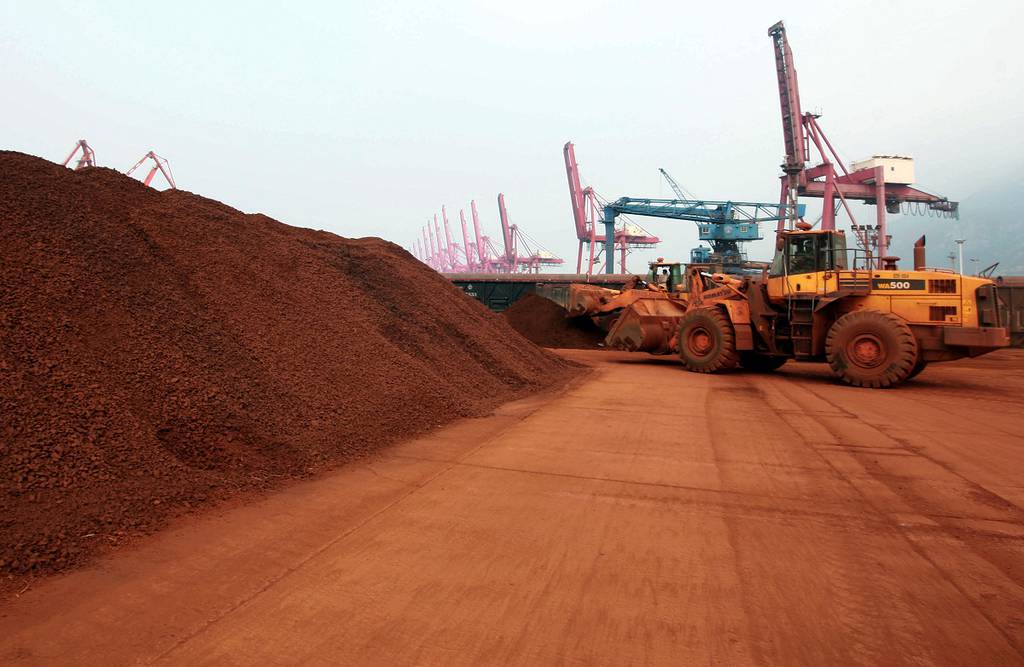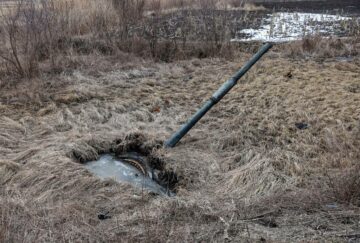
The United States’ increased reliance on adversarial nations such as China for critical minerals has resulted in an unsustainable and unreliable system fraught with national security concerns. Now, the U.S. must invest in bolstering the mining industry to claim its own critical mineral supply or risk falling behind.
Critical minerals have become more crucial than ever for advanced defense technologies, from cutting-edge weaponry to communication systems. The demand for critical minerals has reached unprecedented levels, particularly with the push to electric vehicles and other green technology as the nation moves toward a clean energy future. The International Energy Agency’s World Energy Outlook predicts substantial growth in the critical mineral market, expected to rise from $40 billion in 2020 to $280 billion by 2030.
At the same time, the supply of foreign critical minerals is continually under threat by export controls from countries seeking to exert economic pressure. The China Commerce Ministry recently imposed export controls on gallium and germanium, minerals essential for computer chips and solar panels, and forced buyers to navigate applying for export permits.
To address these risks and regain control over its critical mineral supply chain, the United States must prioritize expanding domestic production and sourcing these minerals within its geographic borders, starting in Southwestern states like Arizona. This is essential to bolstering national security and reducing the country’s dependence on potentially hostile foreign suppliers.
Policymakers can advance the country’s critical mineral brain trust by investing in the next generation of mining talent, improving permitting processes, leaning on mining states for environmentally responsible mining techniques, and expanding the definition of critical minerals to include copper.
Securing mining talent
Despite having abundant reserves, the nation faces a shortage of skilled mining workers essential for critical mineral mining and extraction. The number of accredited mining schools has declined significantly over the years, with only 14 remaining compared to 25 in 1982. These programs only graduate between 300 and 350 B.S. mining engineers per year, while conservative estimates indicate China graduates thousands of engineers for their domestic mining industry every year. Mining engineering programs are small at most engineering colleges nationwide, given it is not economically viable for most schools to invest in the required infrastructure. Technical schools and community colleges play a key role in helping to grow the U.S. mining workforce.
While Congress has taken some action to address the mining workforce challenge (namely, the introduction of the Mining Schools Act by Sen. John Barrasso (R-WY)), additional federal funding is needed to cultivate the mining talent needed to power U.S. critical mineral production. The federal government must provide substantial funding for the infrastructure higher education institutions need to foster a pipeline of students with the skills and knowledge to enter the mining industry.
Improving permitting processes
Currently, mining projects face significant challenges, as lengthy permitting procedures and red tape means projects can take anywhere from 2-17 years to complete. This pace poses a serious risk to the nation’s ability to reach the critical mineral production levels required to compete globally. Streamlining and expediting the permitting process for critical mineral extraction is essential. Both Canada and Australia have implementedshorter permitting processes, which also incorporate similarly stringent environmental regulations addressing clean water and air.
Environmental responsibility
Southwestern states like Arizona can serve as the blueprint for greener mining practices through existing mining infrastructure, which can be adapted to embrace sustainable methods. These states also demonstrate that it is possible to mine responsibly without compromising ecological integrity with the proper approach and technologies including state-of-art monitoring of water quality, air quality, and stability of built structures. Additionally, mining is well aligned with circular economy and the mine life cycle no longer ends with closure, but Arizona operators are looking closely at remining of waste and recycling of manufactured waste. Prioritizing environmentally friendly practices will help sway public opinion and illustrate that responsible mining and recycling of materials limit the environmental impact. By tapping into the expertise and innovations of mining states like Arizona, we can develop more sustainable mining practices and move toward a greener future.
Copper as a critical mineral
The U.S. does not categorize copper as a critical mineral, despite it being vital to the economy and a greener future. Adding copper to the official list of critical minerals would help the U.S. take the helm on critical minerals, and may allow for mechanism to prioritize permitting and technology innovation, particularly given that Arizona is one of the top producers of copper globally.
Copper necessitates large, complex, and capital-intensive clean-mining operations, demanding a well-prepared workforce to handle global mineral commodities. The country’s mining universities, technical schools, and community colleges play a vital role in preparing the next generation of mining talent.
Ultimately, expanding domestic production will help the United States reduce its reliance on foreign supplies and mitigate national security risks. Policymakers, decision-makers, and federal agency leaders must invest in mining talent, streamline permitting processes, adopt responsible mining techniques, and broaden the definition of critical minerals to ensure the country can meet the critical mineral demands of the future.
Kray Luxbacher is the University of Arizona’s Department Head of Mining and Geological Engineering and serves as the inaugural Gregory H. and Lisa S. Boyce Leadership Chair of Mining and Geological Engineering.
- SEO Powered Content & PR Distribution. Get Amplified Today.
- PlatoData.Network Vertical Generative Ai. Empower Yourself. Access Here.
- PlatoAiStream. Web3 Intelligence. Knowledge Amplified. Access Here.
- PlatoESG. Carbon, CleanTech, Energy, Environment, Solar, Waste Management. Access Here.
- PlatoHealth. Biotech and Clinical Trials Intelligence. Access Here.
- Source: https://www.defensenews.com/opinion/2024/01/10/curbing-reliance-on-foreign-critical-minerals-starts-with-mining-in-us/
- :has
- :is
- :not
- 14
- 2020
- 2030
- 25
- 300
- 350
- 70
- a
- ability
- abundant
- accredited
- Act
- Action
- adapted
- adding
- Additional
- Additionally
- address
- addressing
- adopt
- advance
- advanced
- adversarial
- agency
- AIR
- aligned
- allow
- also
- an
- and
- anywhere
- Applying
- approach
- ARE
- arizona
- AS
- At
- Australia
- b
- BE
- become
- behind
- being
- between
- Billion
- blueprint
- bolstering
- borders
- both
- Brain
- broaden
- built
- but
- buyers
- by
- CAN
- Canada
- chain
- Chair
- challenge
- challenges
- China
- China Commerce Ministry
- Chips
- circular economy
- claim
- clean
- clean energy
- closely
- closure
- Colleges
- Commerce
- Commodities
- Communication
- communication systems
- community
- compared
- compete
- complex
- compromising
- computer
- Concerns
- Congress
- conservative
- continually
- control
- controls
- Copper
- countries
- country
- country’s
- critical
- crucial
- Cultivate
- curbing
- cutting-edge
- cycle
- decision-makers
- Defense
- definition
- Demand
- demanding
- demands
- demonstrate
- Department
- dependence
- Despite
- develop
- does
- Domestic
- Ecological
- Economic
- economy
- Education
- embrace
- ends
- energy
- Engineering
- Engineers
- ensure
- Enter
- environmental
- environmentally
- environmentally friendly
- essential
- estimates
- EVER
- Every
- existing
- expanding
- expected
- expertise
- export
- extraction
- Face
- faces
- Falling
- Federal
- Federal government
- For
- forced
- foreign
- Foster
- friendly
- from
- funding
- future
- generation
- geographic
- given
- Global
- Globally
- Government
- graduate
- Green
- Green technology
- greener
- Grow
- Growth
- handle
- Have
- having
- head
- help
- helping
- higher
- Higher education
- HTML
- HTTPS
- IEA
- illustrate
- images
- Impact
- improving
- in
- Inaugural
- include
- Including
- incorporate
- indicate
- industry
- Infrastructure
- Innovation
- innovations
- institutions
- integrity
- into
- Introduction
- Invest
- investing
- IT
- ITS
- John
- jpg
- Key
- knowledge
- large
- leaders
- Leadership
- levels
- Life
- like
- LIMIT
- List
- longer
- looking
- manufactured
- Market
- materials
- May..
- means
- means projects
- mechanism
- Meet
- methods
- mine
- mineral
- minerals
- Mining
- Mining Industry
- ministry
- Mitigate
- monitoring
- more
- most
- move
- moves
- must
- namely
- nation
- National
- national security
- Nations
- Nationwide
- Navigate
- necessitates
- Need
- needed
- next
- no
- now
- number
- of
- official
- on
- ONE
- only
- Operations
- operators
- Opinion
- or
- Other
- over
- own
- Pace
- panels
- particularly
- per
- permits
- pipeline
- plato
- Plato Data Intelligence
- PlatoData
- Play
- policymakers
- poses
- possible
- potentially
- power
- practices
- Predicts
- preparing
- pressure
- Prioritize
- prioritizing
- procedures
- process
- processes
- Production
- Programs
- projects
- proper
- provide
- public
- public opinion
- Push
- quality
- reach
- reached
- recently
- recycling
- Red
- reduce
- reducing
- regain
- regulations
- reliance
- remaining
- required
- reserves
- responsible
- responsibly
- resulted
- Rise
- Risk
- risks
- Role
- s
- same
- Schools
- security
- security risks
- seeking
- serious
- serve
- serves
- shortage
- significant
- significantly
- Similarly
- skilled
- skills
- small
- solar
- solar panels
- some
- Sourcing
- Stability
- Starting
- starts
- States
- streamline
- streamlining
- stringent
- structures
- Students
- substantial
- such
- suppliers
- supplies
- supply
- supply chain
- sustainable
- system
- Systems
- Take
- taken
- Talent
- tape
- tapping
- Technical
- techniques
- Technologies
- Technology
- technology innovation
- than
- that
- The
- The Future
- their
- These
- this
- thousands
- threat
- Through
- time
- to
- toward
- Trust
- u.s.
- under
- United
- United States
- Universities
- university
- unprecedented
- unsustainable
- us
- viable
- vital
- Waste
- Water
- we
- WELL
- which
- while
- will
- with
- within
- without
- workers
- Workforce
- world
- would
- year
- years
- zephyrnet













